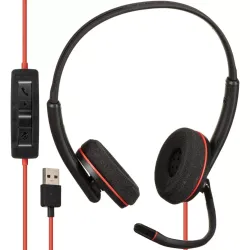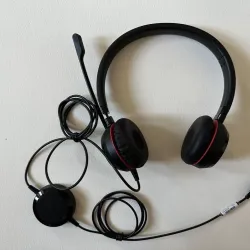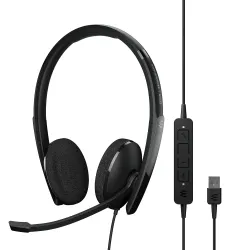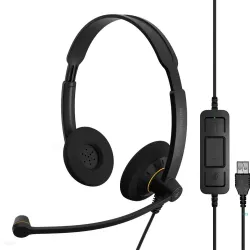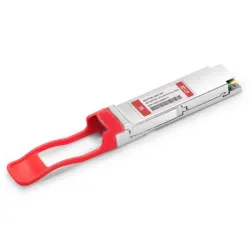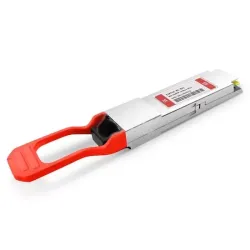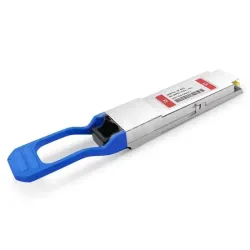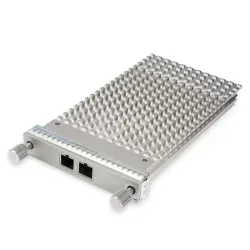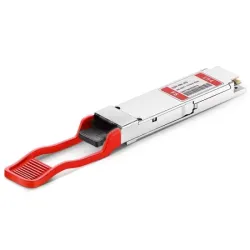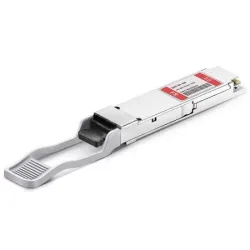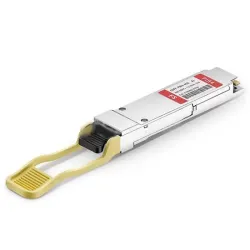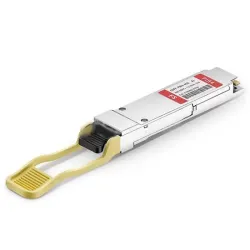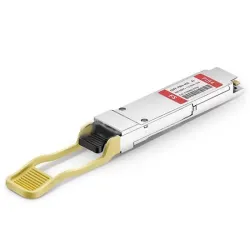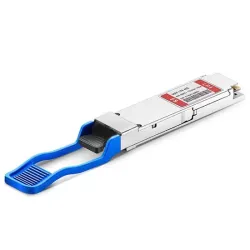The Types and Work of Modules/Transceivers And Know the Specifications and Features Cisco D-Link Dell EMC HP and IBM:
Introduction to SFP Modules/Transceivers
SFP (Small Form-factor Pluggable) module, also known as an SFP Modules/Transceivers, is a hot-pluggable, compact, and modular device that is used in telecommunication and networking equipment to connect network switches, routers, servers, and other network devices.
SFP modules support a variety of communication standards, including Ethernet, Fiber Channel, SONET/SDH, and Infiniband. They are available in different types, such as copper-based SFP modules, fiber-optic SFP modules, and BiDi (Bidirectional) SFP modules.
The SFP module is designed to support various transmission distances, from short-range applications within a data center to long-haul applications across a campus or between cities. The module allows network administrators to upgrade or replace the network equipment without replacing the entire device, making it a cost-effective solution for network upgrades and expansions.
The SFP module connects to the network equipment through an SFP port, which provides the electrical and mechanical interface between the module and the device. The module converts the electrical signal from the device into an optical signal that can be transmitted over the fiber-optic cable or vice versa.
Types of SFP Modules/Transceivers
There are several types of SFP modules/transceivers available in the market, each designed for specific communication standards, transmission distances, and cable types. Some of the common types of SFP modules are:
Copper-based SFP modules:
These modules are designed to support copper-based cablings, such as Cat5e and Cat6, and are used for short-range applications up to 100 meters.
Fiber-optic SFP modules:
These modules use fiber-optic cabling and are available in different types, including single-mode and multi-mode fibers. They support longer transmission distances ranging from a few hundred meters to several kilometers.
BiDi (Bidirectional) SFP modules:
These modules use a single strand of fiber-optic cabling to transmit and receive data, making them a cost-effective solution for network upgrades and expansions.
CWDM (Coarse Wavelength Division Multiplexing) SFP modules:
These modules use the CWDM technology to transmit and receive data over a single fiber-optic cable, allowing multiple channels to be transmitted over the same cable.
DWDM (Dense Wavelength Division Multiplexing) SFP modules:
These modules use the DWDM technology to transmit and receive data over a single fiber-optic cable, allowing multiple channels to be transmitted over the same cable, but with a higher number of channels than CWDM.
SFP+ (enhanced SFP) modules:
These modules are an enhanced version of SFP and support higher data rates up to 10 Gbps.
QSFP (Quad Small Form-factor Pluggable) modules:
These modules are four times larger than SFP modules and support higher data rates of up to 100 Gbps.
How SFP Modules/Transceivers Work
SFP modules/transceivers are designed to convert the electrical signals from network devices, such as switches and routers, into optical signals that can be transmitted over fiber-optic cables, or vice versa.
When an SFP module is inserted into an SFP port on a network device, it establishes a physical and electrical connection with the device. The module uses an LC or SC connector to attach to the fiber-optic cable and converts the electrical signal from the device into an optical signal that can be transmitted over the cable. The module also receives the optical signal from the cable and converts it back into an electrical signal that can be processed by the device.
The SFP module contains a laser transmitter or LED, which emits light that carries the data signals over the fiber-optic cable. The module also contains a receiver, which receives the light signals and converts them into electrical signals that can be processed by the device.
SFP modules are hot-swappable, which means they can be replaced or inserted into an SFP port without disrupting the network. This allows network administrators to add or upgrade network connectivity without replacing the entire device.
The Specifications and Features of SFP modules/transceivers from Cisco, D-Link, Dell, EMC, HP, and IBM:
1. Cisco SFP Modules/Transceivers:
Available in different types, such as copper-based SFP modules, fiber-optic SFP modules, and BiDi SFP modules
Support different transmission distances, from short-range to long-range applications
Available in different data rates, up to 100 Gbps
Compatible with Cisco network devices and other third-party devices
Hot-swappable and easy to install
2. D-Link SFP Modules/Transceivers:
Available in different types, such as copper-based SFP modules, fiber-optic SFP modules, and BiDi SFP modules
Support different transmission distances, from short-range to long-range applications
Available in different data rates, up to 10 Gbps
Compatible with D-Link network devices and other third-party devices
Hot-swappable and easy to install
3. Dell SFP Modules/Transceivers:
Available in different types, such as copper-based SFP modules, fiber-optic SFP modules, and BiDi SFP modules
Support different transmission distances, from short-range to long-range applications
Available in different data rates, up to 10 Gbps
Compatible with Dell network devices and other third-party devices
Hot-swappable and easy to install
4. EMC SFP Modules/Transceivers:
Available in different types, such as copper-based SFP modules, fiber-optic SFP modules, and BiDi SFP modules
Support different transmission distances, from short-range to long-range applications
Available in different data rates, up to 10 Gbps
Compatible with EMC network devices and other third-party devices
Hot-swappable and easy to install
5. HP SFP Modules/Transceivers:
Available in different types, such as copper-based SFP modules, fiber-optic SFP modules, and BiDi SFP modules
Support different transmission distances, from short-range to long-range applications
Available in different data rates, up to 100 Gbps
Compatible with HP network devices and other third-party devices
Hot-swappable and easy to install
6. IBM SFP Modules/Transceivers:
Available in different types, such as copper-based SFP modules, fiber-optic SFP modules, and BiDi SFP modules
Support different transmission distances, from short-range to long-range applications
Available in different data rates, up to 10 Gbps
Compatible with IBM network devices and other third-party devices
Hot-swappable and easy to install
A transceiver module is an electronic device that combines both a transmitter and a receiver in a single unit. It is commonly used in communication systems, such as wireless networks, to transmit and receive data.
A transceiver is a device that combines both a transmitter and a receiver in a single unit, allowing bidirectional communication over a communication channel.A module, on the other hand, refers to a self-contained electronic component or subsystem that can be easily integrated into a larger system or device.Therefore, a transceiver module is a self-contained unit that includes both a transceiver and additional circuitry or components, and is designed to be easily integrated into a larger system or device.
There are several different types of transceivers, including:Radio frequency (RF) transceivers: These transceivers operate in the radio frequency band and are commonly used in wireless communication systems such as Wi-Fi, Bluetooth, and cellular networks.Optical transceivers: These transceivers use optical signals instead of electrical signals for communication, and are commonly used in fiber optic networks.Ethernet transceivers: These transceivers are used in Ethernet networks to convert electrical signals to and from the digital signals used in Ethernet communication.Universal Serial Bus (USB) transceivers: These transceivers are used in USB communication systems to convert data between the USB interface and the device it is connected to.Integrated transceivers: These transceivers combine multiple functions, such as RF and digital signal processing, in a single chip to reduce size and cost and improve performance.
A transceiver is used for bidirectional communication between two devices over a communication channel. It combines the functionality of both a transmitter and a receiver in a single unit, enabling devices to transmit and receive data to and from each other.Transceivers are used in various applications, such as wireless communication systems (e.g., Wi-Fi, Bluetooth, cellular networks), fiber optic networks, Ethernet networks, and USB communication systems. They play a critical role in enabling communication between devices and are an essential component of modern communication technology.
New
New
New
New
New
New
New
New
New
New

